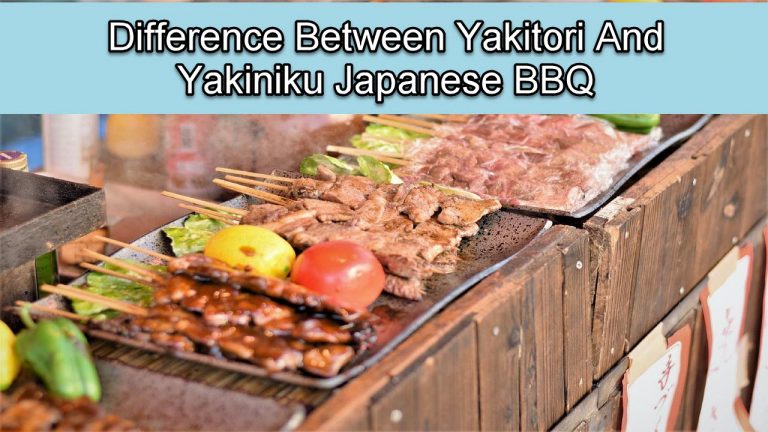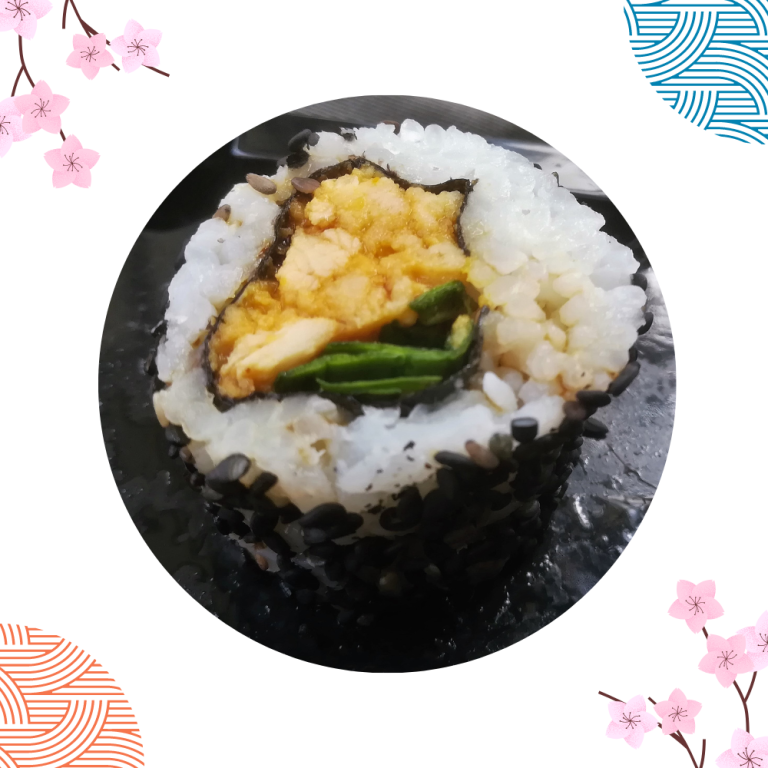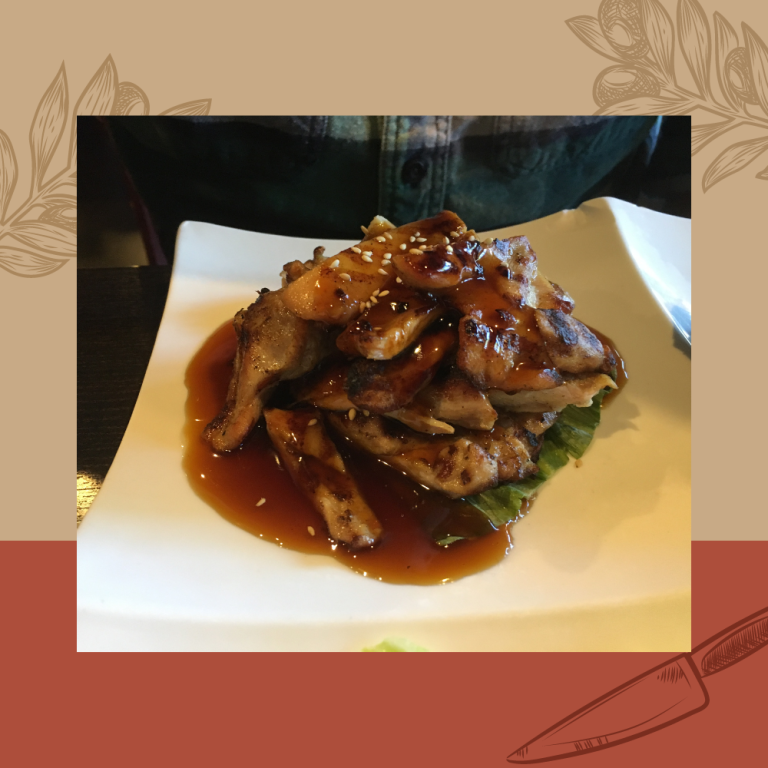12 Best Fried Japanese Food Dishes And Its Recipes

If you’re at a Japanese restaurant, have you ever wondered what the best fried Japanese dish is? No worries, we’ll go through the most popular Japanese fried foods and how they’re created, so you can make your own at home. Scroll down to continue reading if you’re interested in Japanese fried foods.
Best Fried Japanese Food

Nankotsu
Nankotsu is a traditional Japanese delicacy of fried chicken cartilage known for its crispy texture. Nankotsu is typically fried in a batter and seasoned with salt and pepper, with fewer flavor options than chicken wings. Some versions of nankotsu are placed on skewers and grilled.
Nankotsu has a mild flavor and a is generally characterized as crispy and chewy texture. This is a must-try and one of the most delicious Japanese deep fried dishes.

Katsudon
A bowl of rice garnished with a deep-fried breaded pork cutlet, egg, veggies, and sauces is known as katsudon in Japan.
The meal was first documented in 1921, and since then, several variations have been created by adding or substituting the items in the original recipe. The most well-known variations include Worcestershire sauce, miso, and soy sauce, although there are alternative varieties that use beef or chicken instead of pork.
The tonkatsu for the katsudon recipe is made by dipping the cutlet in flour, then egg, then panko breadcrumbs before deep-frying. The sliced tonkatsu and a beaten egg are then cooked in a dashi broth, soy sauce, and onions.
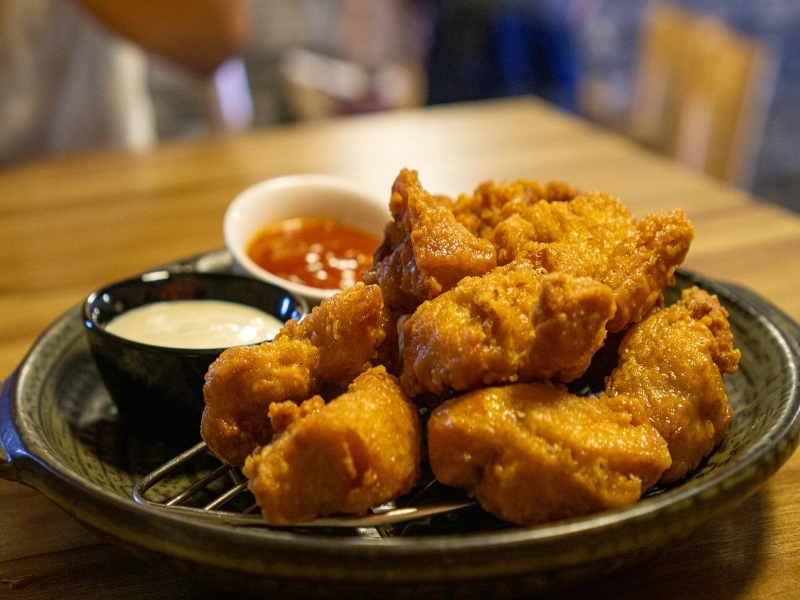
Karaage
Karaage is a Japanese culinary technique in which different dishes are deep fried in oil, most commonly chicken but sometimes other meats and seafood. The method is lightly coating small bits of meat or fish with wheat flour, potato starch or corn starch, then frying them in a light oil. Prior to coating, the items are marinated. The procedure varies from that of tempura, which is not marinated and coated with a batter. Karaage is frequently eaten alone or with shredded cabbage and rice.
Garlic and ginger are commonly used in Japanese karaage meals, which are prepared with soy sauce on the side. They’re a classic favorite of izakayas, or informal Japanese gastropubs, where you can get drinks and nibbles after work, but they’re also available freshly fried as take-out food in several grocery stores and convenience stores.
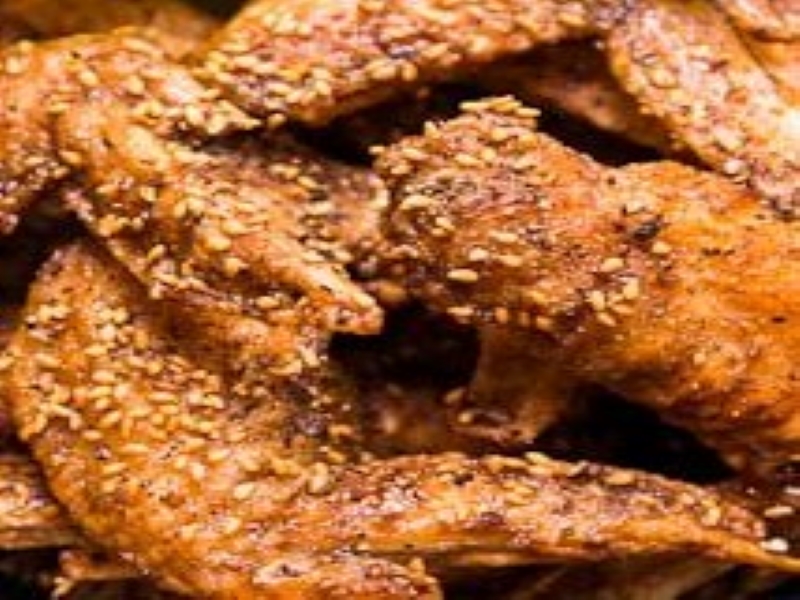
Tebasaki
A type of Japanese dish made of fried chicken wings known as Tebasaki, is cooked in a range of tastes depending on the location, ranging from plain salt and pepper to a combination of spices and sauces. Tebasaki is specifically popular in some areas, like Aichi Prefecture, where it is a preferred food and souvenir.
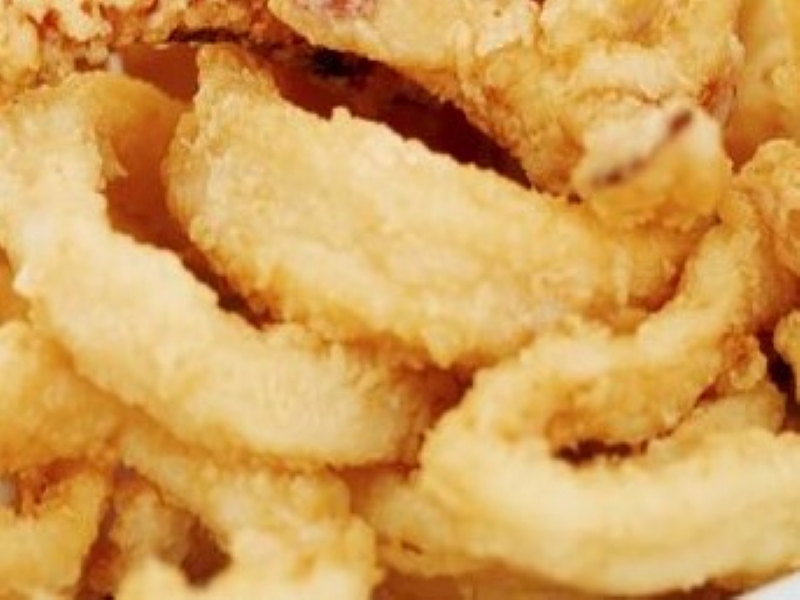
Ika Tempura
Tempura is a traditional Japanese cuisine that consists of battered and deep-fried fish, at, and veggies. In the 16th century, the Portuguese brought the dish to Nagasaki using fritter-cooking techniques. The Japanese term “tempura” was derived from the Latin word tempora, which refers to periods of fasting when Catholics are required to abstain from eating meat by the church.
Squid, often called as Ika in Japanese, is a prominent ingredient in tempura-style cuisine.
The secret to perfectly delicious squid is to avoid overcooking it, which is why tempura cooking is great because the squid cooks rapidly when flash fried.
Salt or tsuyu, a light soy dipping sauce, are often served with ika tempura.
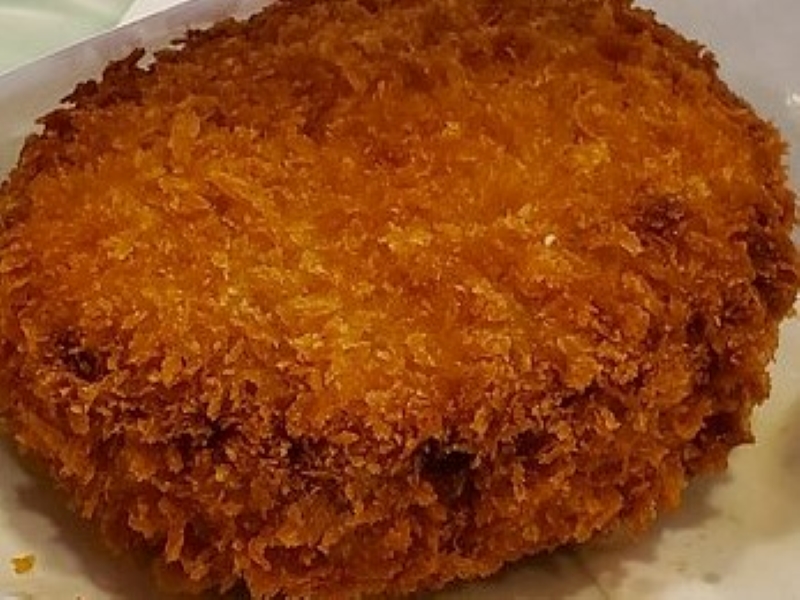
Ika Menchi
Ika menchi is comparable to satsuma-age, because it is also prepared with fried fish paste with portions of squid inside to enhance the chewiness and flavor. Typically, the dish can be consumed on its own or served with a wasabi, soy sauce, or Japanese mustard.
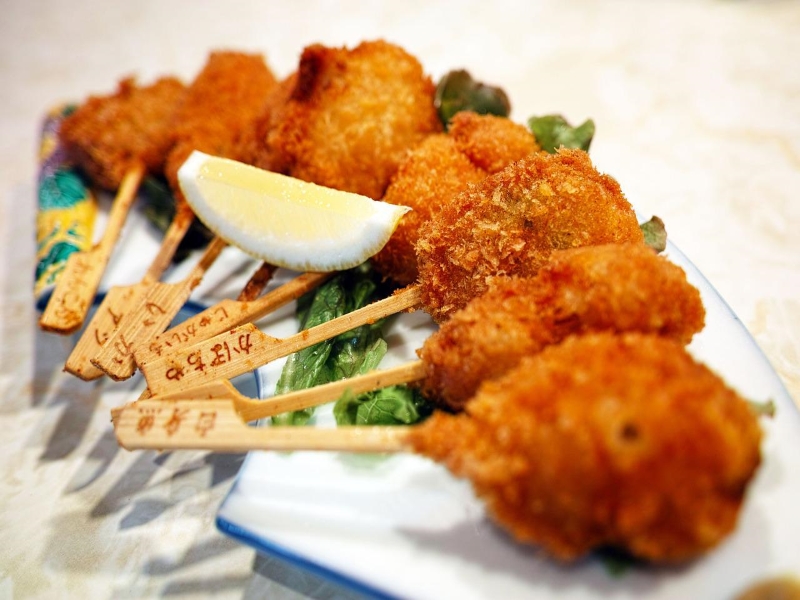
Kushiage
Kushikatsu, also known as kushiage, is a deep-fried skewered food from Japan, particularly meat and vegetables. Kushi refers to the skewers used, while katsu refers to a deep-fried pork cutlet. The delightful bite-sized portions of varied fish and shellfish, pork, chicken, beef, and even horse meat or fresh vegetables are used in making the dish.
Kushiage originated in Shinsekai in the 1920s, but these highly famous fried skewers can now be found everywhere from street food stands to restaurants providing a totally unique Japanese cuisine experience.
This fried food is dipped into a bowl of thinner sauce (Worcestershire dipping sauce) before being consumed at kushiage restaurants and food bars, which is a distinctive eating method. Reinserting food after a mouthful is considered impolite and unclean because a sauce pot is shared among diners. Instead, a cabbage slice is used to scoop sauce from the saucepan and pour it over the kushiage. Some restaurants season the kushi with a brush or spoon placed in the communal kettle.
Some kushiage restaurants include a menu with notes in English and other languages warning customers not to dip their meal into the communal sauce pot after chewing it.
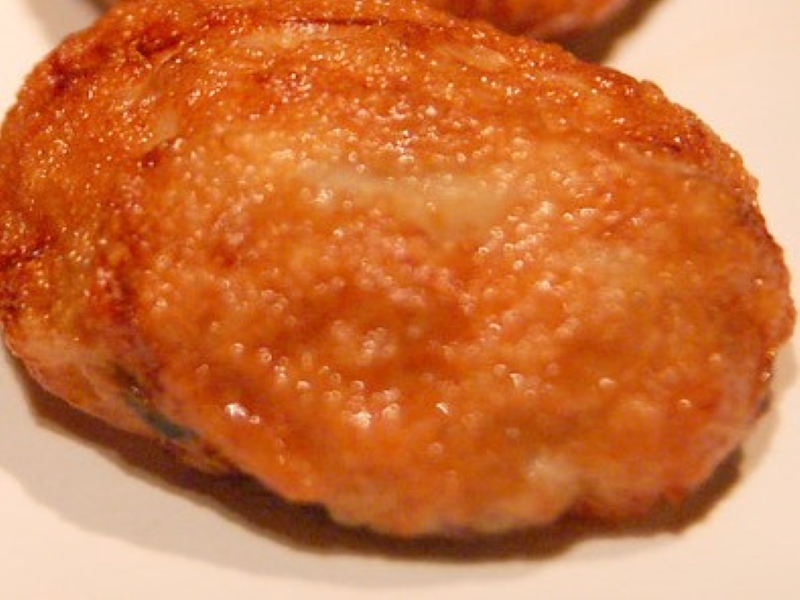
Satsuma-age
Satsuma-age is a fried patty made with minced fish and flour that has been crushed into a paste and molded. The dish originated in Kagoshima. Surimi and flour are combined to form a thick mixture that is then fried to solidify. The Satsuma area is known for it. Throughout Japan, it is known by a number of regional names.
Fish paste is flavoured with salt, sugar, and other spices before being shaped into various forms. It can also contain wood ear, onion, Welsh onion, beni shoga, and other veggies, as well as squid, shrimp, octopus, and other seafoods, as well as certain seasonings. It is created from local fish such as sardines, shark, bonito, and mackerel. It is frequently prepared by combining two or more types of fish.
Satsuma-age is consumed plain or mildly roasted with ginger and soy sauce or mustard and soy sauce. It is commonly found in oden, udon, sara udon, and nimono meals.
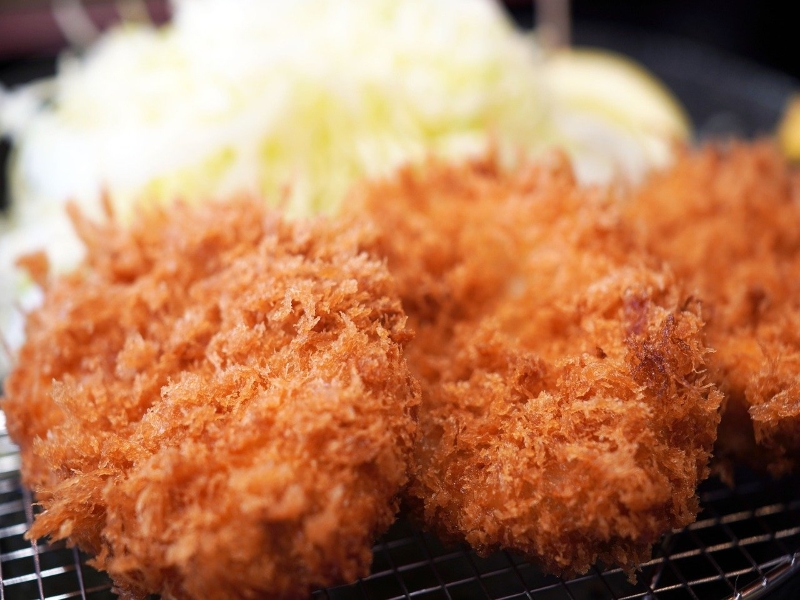
Menchi Katsu
A fried meat cake, menchi-katsu is a Japanese breaded and deep-fried ground pork patty. Typically, the meat is ground beef, pork, or a combination of the two. It’s commonly seen in low-cost bento and teishoku.
To prepare this fried food, ground beef, minced onion, salt, and pepper are combined together and formed into patties. Both sides of these patties are sprinkled with flour. They’re then dipped in bread crumbs and beaten egg mixture before being deep-fried till golden brown. Panko bread crumbs are dried bread crumbs with a coarser texture than regular bread crumbs. Katsu is frequently served with shredded cabbage and Japanese Worcestershire sauce or tonkatsu sauce, a thicker Worcestershire sauce made with fruit and vegetable purees.
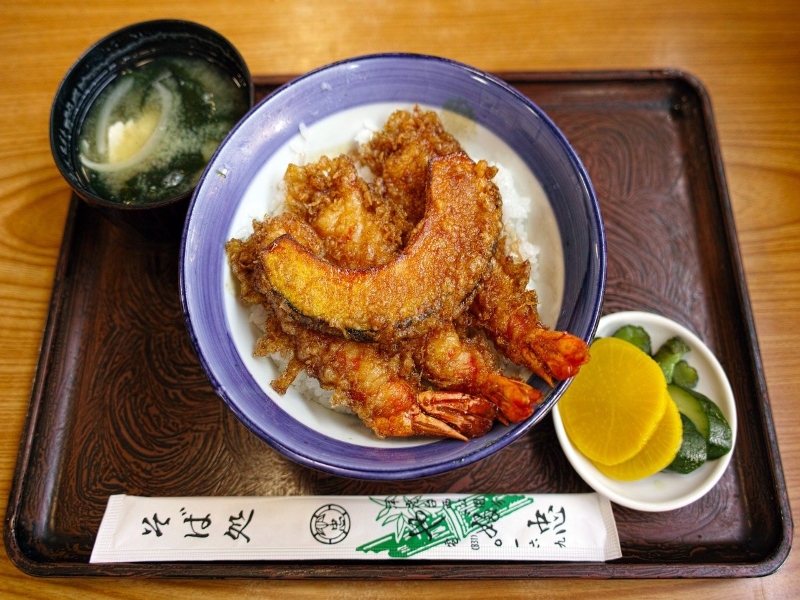
Tendon
Tendon is an acronym for “Tenpura Donburi,” a traditional Japanese bowl dish consisting of battered and deep-fried fish or veggies served over freshly steamed rice. Tendon is commonly made using ebi or shrimp, which can be present in almost all tempura meals, and Japanese eggplant known as nasu, as well as other vegetables including daikon radish and kabocha squash.
Tendon is typically coated with tentsuyu, a flavorful tempura sauce prepared with dashi soup stock and kaeshi, a blend of soy sauce, mirin, and sugar. Alternatively, the tempura portions may be dipped in any dashi or soy-based sauce before being nicely put on top of steamed white rice to make your tendon bowl seem even more appealing.
Tendon meals are commonly eaten for lunch or as a light dinner in Japan.
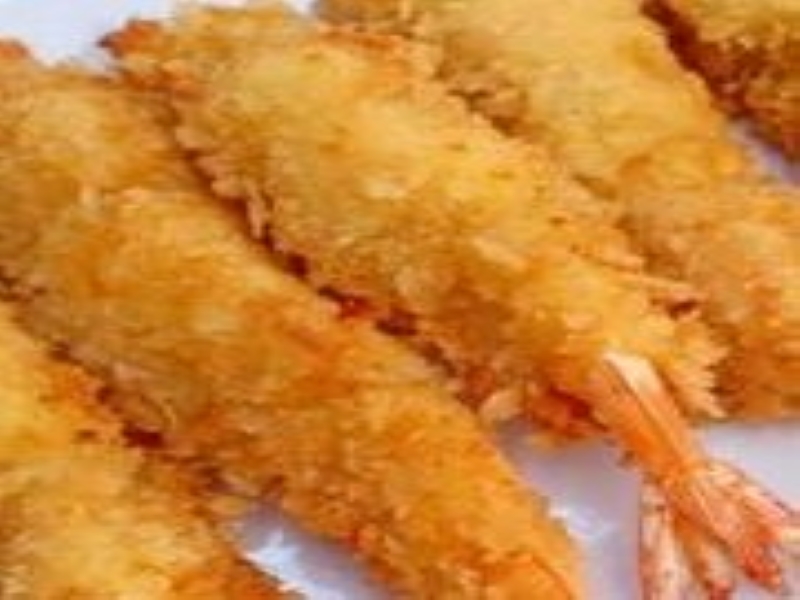
Ebi Furai
Ebi furai is a dark prawn dish that is breaded and deep-fried, with a crunchy texture.
The legs are removed from each prawn, and the shells and head are shelled, but the tail remains attached. The digestive tract is also removed. Straightened prawns are coated with flour, beaten egg, and Japanese breadcrumbs panko, in that sequence, before being deep-fried in hot frying oil. Ebi furai is commonly served with strong Worcestershire sauce, lemon juice, or tartare sauce. Ebi furai, along with comparable dishes such as tonkatsu, is considered to have originated in Tokyo’s Western food restaurants about 1900.
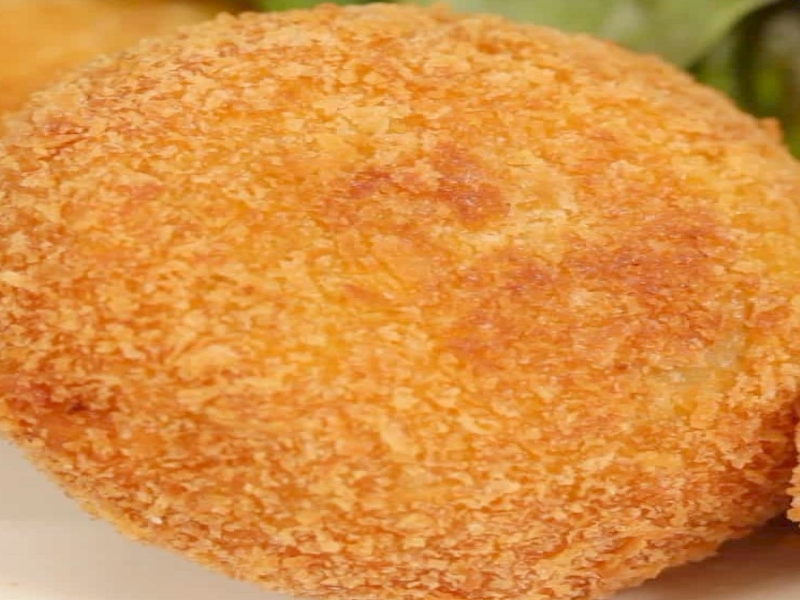
Korokke
Korokke is a term for a range of deep-fried Japanese meals that are a variation of the French croquette. Korokke is produced by combining cooked chopped meat, fish, or vegetables with mashed potato or white sauce, forming it into a flat patty, rolling it in wheat flour, eggs, and Japanese-style breadcrumbs, then deep-frying it till golden brown.
The French croquette was brought to Japan in 1887. The korokke with mashed potatoes is believed to have been created since dairy processing technologies was not widely used in Japan during that time. The first reference of a “kuroketto” may be found in Meiji-era culinary books.
Katsudon Recipe
Ingredients
- 1/4 cup Dashi stock
- 1 large onion, thinly sliced
- 1 1/2 cup cooked rice
- 1/2 tablespoon mirin
- 1/2 tablespoon Sugar
- 1 tablespoon soy sauce
- 1 egg
- 1 piece Tonkatsu
Instructions
- Cut the Tonkatsu about 1.5 cm wide pieces.
- In a dish, gently whisk the eggs and set aside.
- In a small frying pan, bring Dashi stock to a boil over medium heat. Then, place the sliced onion, and cook until the onion is softened.
- Next, add sugar, mirin, and soy sauce. Allow to cook for a few minutes.
- In a saucepan, place the sliced tonkatsu and pour the eggs over it.
- Cook for a few more minutes, till the eggs are half-cooked but still little runny. Rice should be prepared in a bowl.
- Lastly, place the tonkatsu, egg, and sauce over the rice. Enjoy eating!
Frequently Asked Questions
Yes. One of Japanese people’s favorite dishes is fried rice. Chinese immigration influenced Japanese cuisine in the 7th and 9th centuries. Because rice is a staple dish in Japan, the recipe utilizing leftover rice has been highly received by the Japanese people.
Deep fried dishes in Japan are called agemono. Examples of agemono are karaage, satsuma-age, tempura, tonkatsu, etc.
One factor is the use of premium quality, fresh ingredients, which are more expensive. Another reason is that high quality tempura takes time to prepare, with each piece deep-fried to perfection.

